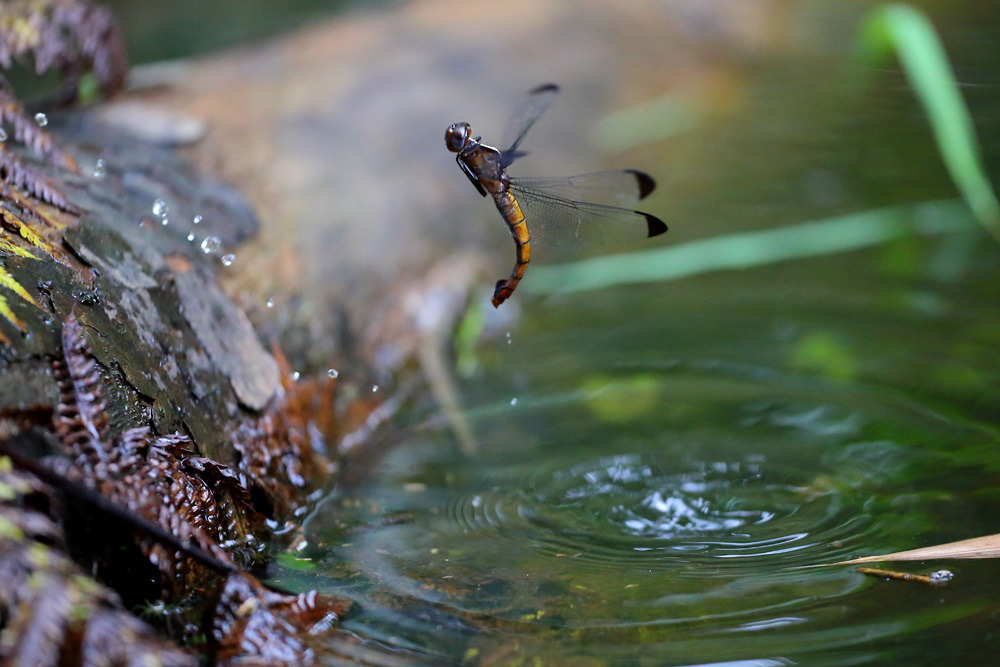Observation of the Week, 9/22/16

This Madagascar jungleskimmer seen in Madagascar by @erlandreflingnielsen is our Observation of the Week!
Erland Nielsen is an engineer by trade, but does entomology in this spare time, “more or less 100 % of it,” he says. His main interest since 1998 has been the order Odonata, or the dragonflies and damselflies, although lately he says “my interest has spread to other kind of insects, especially flies (Diptera) and true bugs (Hemiptera).”
Erland saw the Madagascar jungleskimmer on a trip to Madagascar which was arranged by Odonatours.com, and it was the first trip by the company. “At least three new species was found,” says Erland, “and the trip was an effort to get some pictures for the forthcoming book on the dragonfly fauna of the island, by KD Dijkstra. This book will be distributed for free to institutions and schools in Madagascar, teaching them about a corner of their their unique fauna.” In order to photograph the quick-moving jungleskimmer, Erland had to crank the ISO on his camera to 6400 and use a narrow aperture, but he was able to capture its somewhat unique ovipositing behavior in a great shot. “My main interest in dragonflies are behavior,” says Erland, “and getting a photo of the Madagascar jungle-skimmer doing oviposition was really great.”
Like all dragonflies, the Madagascar jungleskimmer is aquatic or semiaquatic when in their nymphal stage, which can last for several years. Adult female dragonflies, then, have to lay their eggs in or around water. Most do so by either quickly dipping their rear ends on the water’s surface and depositing an egg, or cutting slits into aquatic plants and laying the eggs inside the plants. The female Madagascar jungleskimmer, however, flicks water droplets (with her eggs inside) onto the shore! Some other species are known to do this as well, and as of I can’t find a clear-cut explanation for it. If anyone knows, please write in the comments!
A prolific Flickr user, Erland has found that using iNat’s Flickr importer is an easy way for him to add his geotagged photos to iNaturalist, and hopes to add more of his observations from around the world to iNat.
- by Tony Iwane
- To give you an idea of what this kind oviposition looks like here’s video of a Tyriobapta torrida dragonfly in Singapore flicking her eggs onto land. Very quick!
- Odonatours.com has a report of their tour available online here [pdf].





Comentários
Sending the eggs onto the bank in water droplets keeps them out of the hungry mouths of fish and some invertebrates that might eat them if they were dropped directly into the water. The tiny prolarva/pronymph that hatches out can flip itself into the water, and it is better equipped to escape a predator than an egg is.
Ah, cool. Thanks, @dennispaulson!
Adicionar um Comentário